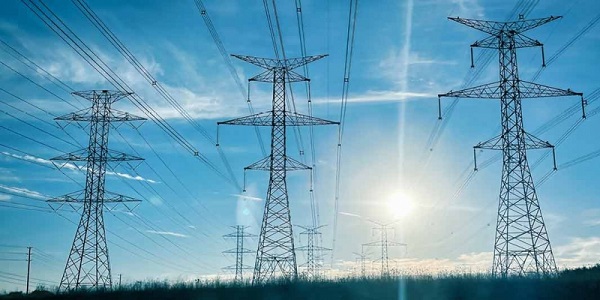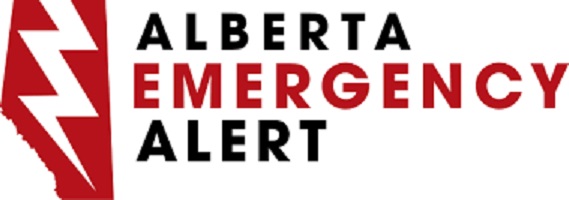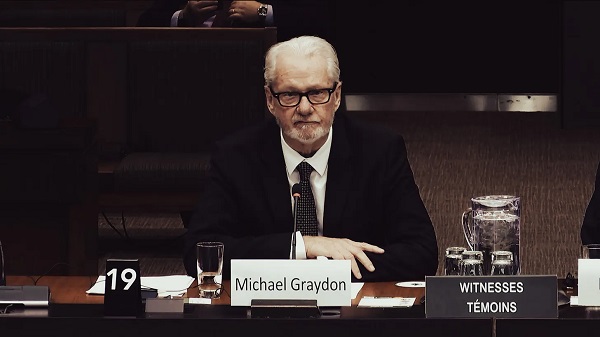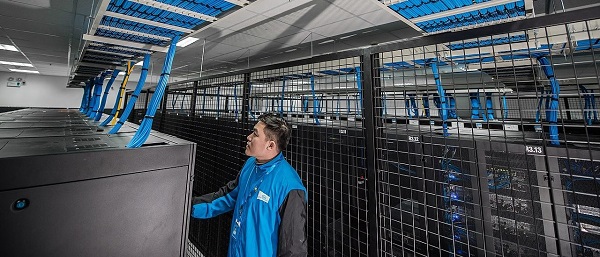Alberta
Don’t default to the Rate of Last Resort

Alberta’s government is encouraging Albertans to explore their electricity options and take charge of their power bill.
Albertans need to be able to make smart financial choices, including choosing an affordable electricity plan that best meets their needs. While most ratepayers choose to sign competitive contracts with one of more than 50 electricity providers in the province’s uniquely competitive market, those who don’t are automatically enrolled on the Rate of Last Resort – the default electricity rate – and likely to pay more for their power.
As part of ongoing efforts to help Albertans save more on their electricity bill, Alberta’s government is launching an advertising campaign to encourage Albertans to explore their electricity options and ensure they know they don’t have to settle for the Rate of Last Resort.
“Albertans shouldn’t pay more on their power bill than they have to. Our government is taking action to ensure they have the tools they need to make informed decisions about their electricity so more of their hard-earned dollars can be used where they’re needed most for them and their families.”
Last year, tens of thousands of households made the switch from the Rate of Last Resort to a competitive contract. The campaign aims to ensure new Albertans and first-time ratepayers still on the Rate of Last Resort know they have choices when it comes to their power bill, and a better electricity option that could save them hundreds of dollars may be available to them.
“Alberta’s competitive electricity market gives consumers choice, and for most Albertans, competitive retail rates are a better choice than the Rate of Last Resort. I encourage everyone to learn about their electricity options and contact the Utilities Consumer Advocate if you need help understanding your utilities.”
The campaign builds on existing consumer awareness initiatives and efforts to lower utility bills and protect ratepayers from volatile price spikes. New regulations came into effect Jan. 1 that require providers to clearly indicate on customers’ utility bills if they are on the Rate of Last Resort and inform them of their competitive retail market options. Every 90 days, the Utilities Consumer Advocate will contact all ratepayers on the Rate of Last Resort, confirm whether they would like to remain on the default rate and encourage them to explore their options.
“Moving to a new place can be overwhelming and expensive, especially those moving from outside the province or country. Alberta’s government is helping ease stress and financial strain by making sure newcomers are informed about their electricity options.”
To protect any Albertans who may not be able to sign a competitive contract from sudden, volatile price spikes, the Rate of Last Resort is set at approximately 12 cents/kWh. The rate is set every two years and can only be changed by a maximum of 10 per cent between two-year terms. Through these changes, Alberta’s government is making the Rate of Last Resort more stable and predictable for Albertans unable to sign a competitive contract. Albertans who are looking for help with their utility bills or are experiencing a dispute with their provider should contact the Utilities Consumer Advocate (UCA).
Quick facts
- Albertans have three options when purchasing their electricity: the Rate of Last Resort, a competitive contract for a variable rate, or a competitive contract for a fixed rate.
- Competitive retail contracts continue to provide the best, lowest cost options for Albertans.
- The Rate of Last Resort is approved by the Alberta Utilities Commission (AUC) and is not determined by the government.
- Approximately 26 per cent of residential customers purchase electricity through the Rate of Last Resort.
- Approximately 29 per cent of eligible commercial customers and 40 per cent of farm customers purchase electricity through the Rate of Last Resort.
Related information
Alberta
Alberta Emergency Alert test – Wednesday at 1:55 PM

Minister of Public Safety and Emergency Services Mike Ellis issued the following statement on the upcoming Alberta Emergency Alert test:
“On Nov. 19, 2025, Alberta will take part in a scheduled test of the National Public Alerting System. At 1:55 p.m., an Alberta Emergency Alert test will be issued across multiple channels including television, radio, wireless devices, websites, social media, the Alberta Emergency Alert mobile app and directly to compatible cellphones across the province.
“While alert interruptions can be inconvenient, these tests are essential. They help us identify and resolve technical issues, ensuring the system functions properly when it matters most. Regular testing, typically held in May and November, is a key part of keeping Albertans informed during real emergencies such as tornadoes, wildfires, floods and Amber Alerts.
“To stay connected, I urge all Albertans to download the Alberta Emergency Alert app, which delivers critical warnings directly to your phone. To receive alerts, your mobile device must be compatible, connected to an LTE 4G network or higher, or connected to Wi-Fi with the app installed. If your phone is on silent, the alert will still appear but may not produce sound.
“This test is also a valuable opportunity to talk with your household, friends and coworkers about emergency preparedness. Questions to ask:
- Do you have an emergency kit with enough supplies for at least 72 hours?
- Have you included essentials like water, non-perishable food, flashlights, batteries and a first aid kit?
- Do you have copies of important documents and a list of emergency contacts?
- Is your kit stored in an easy-to-access location and does everyone know where it is?
“Preparedness doesn’t have to be complicated. Simple steps like having an emergency plan and essential supplies can make a big difference to protect yourself and your household.”
Related information
Alberta
Carney government’s anti-oil sentiment no longer in doubt

From the Fraser Institute
The Carney government, which on Monday survived a confidence vote in Parliament by the skin of its teeth, recently released a “second tranche of nation-building projects” blessed by the Major Projects Office. To have a chance to survive Canada’s otherwise oppressive regulatory gauntlet, projects must get on this Caesar-like-thumbs-up-thumbs-down list.
The first tranche of major projects released in September included no new oil pipelines but pertained largely to natural gas, nuclear power, mineral production, etc. The absence of proposed oil pipelines was not surprising, as Ottawa’s regulatory barricade on oil production means no sane private company would propose such a project. (The first tranche carries a price tag of $60 billion in government/private-sector spending.)
Now, the second tranche of projects also includes not a whiff of support for oil production, transport and export to non-U.S. markets. Again, not surprising as the prime minister has done nothing to lift the existing regulatory blockade on oil transport out of Alberta.
So, what’s on the latest list?
There’s a “conservation corridor” for British Columbia and Yukon; more LNG projects (both in B.C.); more mineral projects (nickel, graphite, tungsten—all electric vehicle battery constituents); and still more transmission for “clean energy”—again, mostly in B.C. And Nunavut comes out ahead with a new hydro project to power Iqaluit. (The second tranche carries a price tag of $58 billion in government/private-sector spending.)
No doubt many of these projects are worthy endeavours that shouldn’t require the imprimatur of the “Major Projects Office” to see the light of day, and merit development in the old-fashioned Canadian process where private-sector firms propose a project to Canada’s environmental regulators, get necessary and sufficient safety approval, and then build things.
However, new pipeline projects from Alberta would also easily stand on their own feet in that older regulatory regime based on necessary and sufficient safety approval, without the Carney government additionally deciding what is—or is not—important to the government, as opposed to the market, and without provincial governments and First Nations erecting endless barriers.
Regardless of how you value the various projects on the first two tranches, the second tranche makes it crystal clear (if it wasn’t already) that the Carney government will follow (or double down) on the Trudeau government’s plan to constrain oil production in Canada, particularly products derived from Alberta’s oilsands. There’s nary a mention that these products even exist in the government’s latest announcement, despite the fact that the oilsands are the world’s fourth-largest proven reserve of oil. This comes on the heels on the Carney government’s first proposed budget, which also reified the government’s fixation to extinguish greenhouse gas emissions in Canada, continue on the path to “net-zero 2050” and retain Canada’s all-EV new car future beginning in 2036.
It’s clear, at this point, that the Carney government is committed to the policies of the previous Liberal government, has little interest in harnessing the economic value of Canada’s oil holdings nor the potential global influence Canada might exert by exporting its oil products to Asia, Europe and other points abroad. This policy fixation will come at a significant cost to future generations of Canadians.
-

 Daily Caller2 days ago
Daily Caller2 days ago‘Holy Sh*t!’: Podcaster Aghast As Charlie Kirk’s Security Leader Reads Texts He Allegedly Sent University Police
-

 Crime10 hours ago
Crime10 hours ago‘Modern-Day Escobar’: U.S. Says Former Canadian Olympian Ran Cocaine Pipeline with Cartel Protection and a Corrupt Toronto Lawyer
-

 Great Reset2 days ago
Great Reset2 days agoCanadian government forcing doctors to promote euthanasia to patients: report
-

 Alberta2 days ago
Alberta2 days agoSylvan Lake football coach fired for opposing transgender ideology elected to town council
-

 Health2 days ago
Health2 days agoNEW STUDY: Infant Vaccine “Intensity” Strongly Predicts Autism Rates Worldwide
-

 Carbon Tax2 days ago
Carbon Tax2 days agoCarney fails to undo Trudeau’s devastating energy policies
-

 Business1 day ago
Business1 day agoNearly One-Quarter of Consumer-Goods Firms Preparing to Exit Canada, Industry CEO Warns Parliament
-

 Daily Caller22 hours ago
Daily Caller22 hours agoDemocrats Explicitly Tell Spy Agencies, Military To Disobey Trump




